
|

|
|
Home Site Search Contact Us Subscribe
|
|
Beginning the Bauhaus "Bauhaus Beginnings" at the Getty Research Institute lives up to its name - it is so impressive that, after a preview tour, German President Frank-Walter Steinmeier wondered, "How can there be so much great Bauhaus material outside of Germany?" By Julie D. Taylor, Hon. AIA July 11, 2019 Editor’s note: Originally published by Society of Architectural Historians/Southern California Chapter; used by permission.
The exhibition “Bauhaus Beginnings” lives up to its name, as the Getty Research Institute (GRI) compilation of objects and documents traces the influential school, starting with its initial pedagogical principles. The selection of more than 250 color studies, drawings, photographs, projections, notebooks, letters, textiles, and other ephemera – largely from GRI’s own collection, which started in the early 1980s – is so impressive that, after a preview tour, German President Frank-Walter Steinmeier wondered, “How can there be so much great Bauhaus material outside of Germany?” See for yourself; the exhibition runs through October 13th.
Arranged in three galleries, the compact show explores three tenets of the Bauhaus: spirituality and expression, light and color, and ideas into practice. To enlarge its exposure, GRI has launched a companion on-line exhibition, “Bauhaus: Building the New Artist.” Also separated into three parts reflecting the Bauhaus curriculum – form and color, matters and materials, body and spirit – each section includes an interactive exercise.
GRI Head of Architectural Collections Maristella Casciato curated the materials with an eye toward showing process, community, and inclusiveness. The diversity of masters and students on display stretches way beyond the text-book famous stars of the movement to include many women and lesser-known artists. “This is about building the modern man and woman, in addition to building buildings,” notes Casciato.
Thus, storied examples of Bauhaus work that can be seen almost anywhere in myriad global 100-year anniversary commemorations are purposely not shown. “The show is about the dialogue and pedagogical innovations, not the cult of personality,” stresses architect Tim Durfee, who consulted on the exhibition design.
Literally manifesting this philosophical flatness is the display mechanism of simply laying two-dimensional objects within the informality of tables, rather than placing rarified specimens on pedestals. “Not everything is a masterpiece,” notes Durfee about what are essentially lesson plans and homework assignments. And that is what makes this depiction so unusual and exciting. We get insight into the thought processes that continue to affect our design lives today.
Julie D. Taylor, Hon. AIA, is West Coast correspondent for ArchNewsNow.com. She is principal of Taylor & Company, a public relations firm championing the profession of architecture, and was 2014-2016 Public Director on the AIA National Board.
Also by Taylor:
Venice in Three Parts
- Part 1
Venice in Three Parts
- Part 2
Venice in Three Parts
- Part 3
Throughout "Frank Gehry" at the Los Angeles County Museum of Art, the repeated and insistent message is that his work "distinguished him as an urbanist," as if trying so hard to convince us that it's true. The curator doth protest too much.
Delight & Design: "Provocations: The Architecture and Design of Heatherwick Studio" Wonder and joy pervade the exhibition and enchant its viewers. Skip - don't walk - to experience it.
Drawing an Elegant Conclusion: Menil Drawing Institute by Johnston Marklee Houston: In the somewhat arbitrary hierarchy of fine art media, where painting is king, drawing is often considered less valuable. The new MDI elevates the medium by providing a distinguished, respectful home.
The Julia Morgan-designed Asilomar Conference Grounds in Pacific Grove, CA, will be abuzz at the biennial event September 27-29, 2013.
The Blob That Could Eat Los Angeles The history of our ill-fated Los Angeles County Museum of Art is told in "The Presence of the Past: Peter Zumthor Reconsiders LACMA": I'm a fan of Zumthor, but this building could be cool almost anywhere else.
Overdrive: L.A.'s Future is Present in its Past Simultaneously hopeful and wistful, The Getty Museum's exhibition is about the evolution of a modern city seen through its architecture, confirming the truly layered nature of Los Angeles.
|
(click on pictures to enlarge) 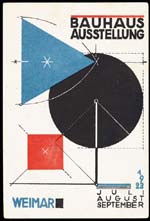 ©2019 Artists Rights Society (ARS), New York/VG Bild-Kunst, Bonn 6 images from “Bauhaus Beginnings”: Herbert Bayer (Austrian, 1900-1985). Postcard for the Bauhaus Exhibition of 1923. Lithograph. Getty Research Institute, Los Angeles (850513) 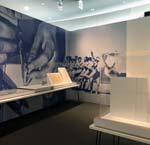 Julie D. Taylor “Bauhaus Beginnings” installation designed by architect Tim Durfee. 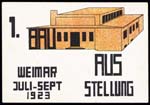 Getty Research Institute Paul Häberer (German, 1902-1978). Postcard for the Bauhaus Exhibition of 1923. Lithograph. Getty Research Institute, Los Angeles (850513) 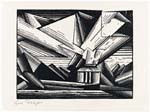 ©2019 Artists Rights Society (ARS), New York/VG Bild-Kunst, Bonn Lyonel Feininger (American, 1871-1956) Villa am Strand (Villa on the shore). Woodcut. From "Bauhaus Drucke: Neue Europaeische Graphik; Erste Mappe; Meister d. Staatlichen Bauhauses in Weimar" (Potsdam: Müller, 1921). Getty Research Institute, Los Angeles (2012.PR.4) 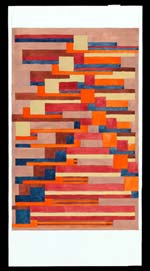 © Heirs of Léna Bergner Léna Bergner (German, 1906-1981) Carpet Design, ca. 1925-1932. Gouache and graphite on paper. Getty Research Institute, Los Angeles (850514) 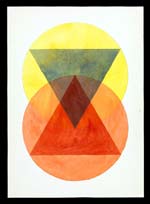 © Heirs of Léna Bergner Léna Bergner (German, 1906-1981). "Durchdringung" (Penetration) for Paul Klee's Course, ca. 1925-1932. Watercolor and graphite on paper. Getty Research Institute, Los Angeles (850514) 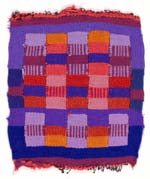 Getty Research Institute Immeke Mitscherlich-Schwollmann (Prussian-born, Polish, 1899-1985). Weaving Sample for a Wall Hanging, ca. 1925. Wool weft and cotton warp. Getty Research Institute, Los Angeles (850514) 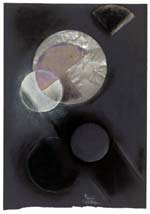 Getty Research Institute 6 images from "Building the New Artist": Light-dark contrast study for Johannes Itten's Preliminary Course, Friedl Dicker, 1919. Charcoal and pastel collage on black paper. 32.5 x 22.5 cm. Bauhaus Drawings and Prints by Friedl Dicker. Getty Research Institute, 920030 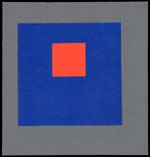 © Estate Erich Mrozek Study for Vassily Kandinsky’s Farbenlehre (Color theory) course, Erich Mrozek, ca. 1929-1930. Collage with gouache on paper. 24x22.5 cm. Bauhaus Student Work, 1919-1933. Getty Research Institute, 850514 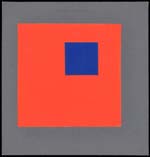 © Estate Erich Mrozek Study for Vassily Kandinsky’s Farbenlehre (Color theory) course, Erich Mrozek, ca. 1929-1930. Collage with gouache on paper. 24x22.5 cm. Bauhaus Student Work, 1919-1933. Getty Research Institute, 850514 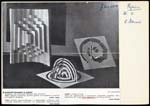 © Stephan Consemüller Material-übungen (Material studies). Artwork: Walter Tralau, Arieh Sharon, ca. 1926-1929. Paper. Photo: Erich Consemüller, ca. 1926-1929. Gelatin silver print. Photo: 14.5x16.7 cm, sheet: 14.8x21.1 cm. Assorted Papers Relating to Bauhaus Designers, 1919-1984. Getty Research Institute, 920020. 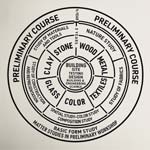 Julie D. Taylor Diagram of the Bauhaus curriculum (adapted, right), Walter Gropius, 1922. Lithograph. 20.2x29.3 cm. From Walter Gropius, "Satzungen Staatliches Bauhaus in Weimar" (Statutes of the State Bauhaus in Weimar), July 1922. Bauhaus Typography Collection, 1919-1937. Getty Research Institute, 850513 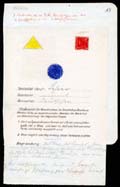 Bauhaus-Archiv Berlin Survey distributed at the wall-painting workshop investigating relationships between forms and colors, filled out by an unidentified Bauhaus student (possibly Gertrud or Alfred Arndt), Vassily Kandinsky, 1923. Lithograph, graphite, and crayon on paper. 23.3x15.1 cm. Bauhaus-Archiv Berlin, F991 |
© 2019 ArchNewsNow.com